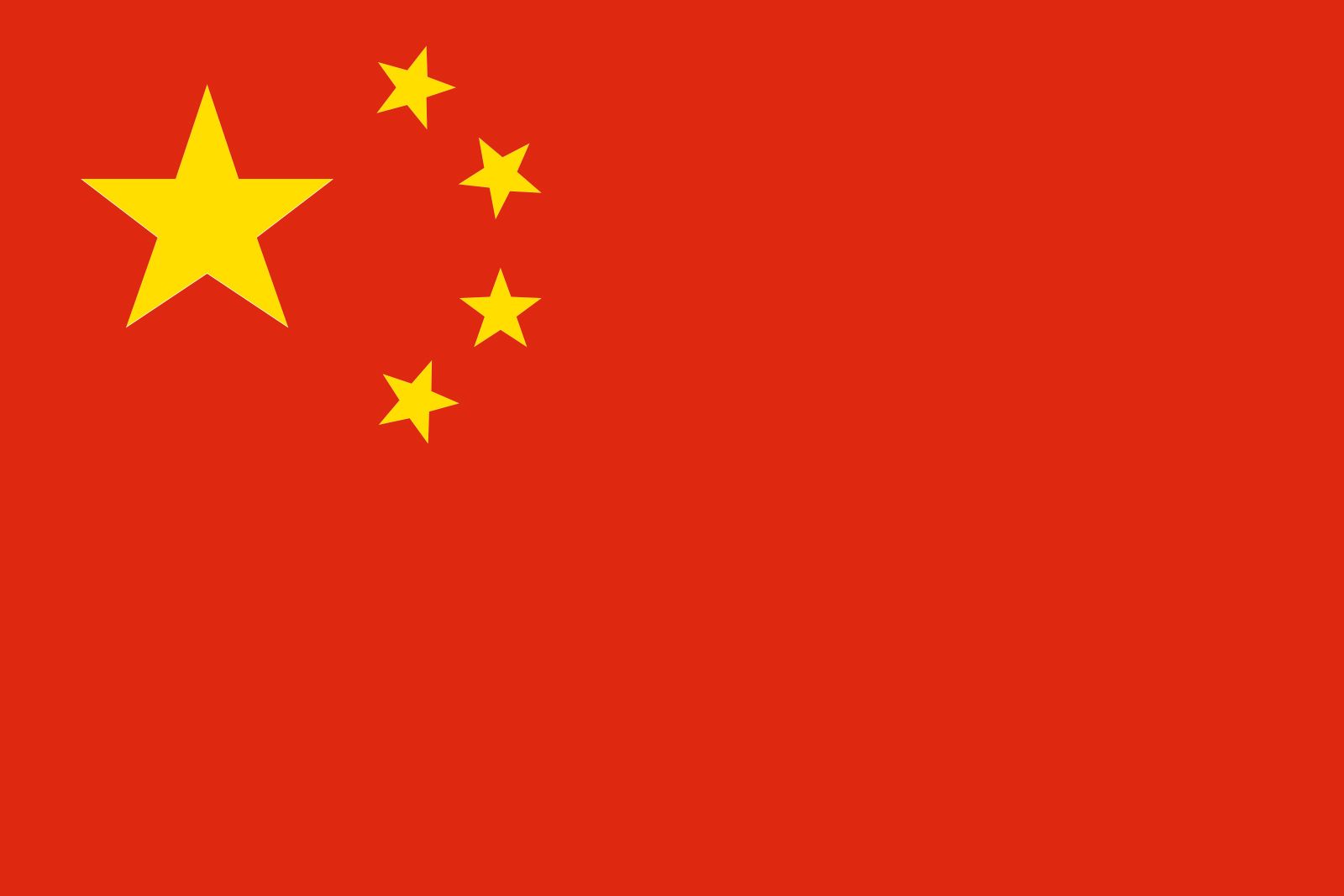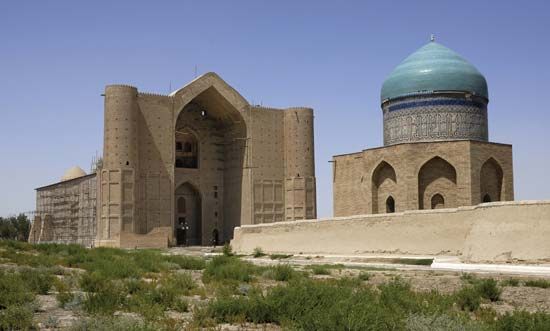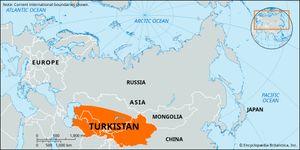Turkistan
- Also spelled:
- Turkestan
- Major Events:
- Basmachi Revolt
- Related Places:
- China
- Kazakhstan
- Uzbekistan
- Kyrgyzstan
- Turkmenistan
Turkistan, in Asian history, the regions of Central Asia lying between Siberia on the north; Tibet, India, Afghanistan, and Iran on the south; the Gobi (desert) on the east; and the Caspian Sea on the west. The term was intended to indicate the areas inhabited by Turkic peoples, but the regions also contained peoples who were not Turkic, such as the Tajiks, and excluded some who were, including the Turks of the former Ottoman Empire and the Turko-Tatar peoples of the Volga River area. The mountain systems of the Pamirs and Tien Shan divided the total area of more than 1,000,000 square miles (2,600,000 square km) between West Turkistan (Russian sphere of influence)—covering present-day Turkmenistan, Uzbekistan, Tajikistan, Kyrgyzstan, and the southern part of Kazakhstan—and East Turkistan (Chinese sphere of influence), now the Xinjiang Uyghur Autonomous Region. For a time after the mid-1920s, West Turkistan was known as Soviet Central Asia (administratively excluding Kazakhstan).
Early history
Turkistan may be said to have entered history with the conquest of Kashgaria by the Huns at the beginning of the 2nd century bce. After the breakup of the Hun empire, East Turkistan was annexed by the Chinese. About 400 ce the Hephthalites created an empire in West Turkistan. During the 6th century the Turks first appeared and established themselves in Transoxania, consisting of the lands east of the Amu Darya (ancient Oxus River).
Transoxania was conquered by the Arabs in the 8th century and attained its greatest prosperity under their successors, the Persian Samanid dynasty. About the same time, the Uyghurs from Mongolia occupied East Turkistan, where they have remained the majority population. The whole of Turkistan was under various Turkic rulers until the appearance of the Mongols under Genghis Khan, who occupied Transoxania in 1220. Genghis Khan assigned Turkistan to his second son, Chagatai, whose descendants eventually divided into two branches, the khans of Transoxania and those of East Turkistan. In 1369 Timur (Tamerlane) conquered Transoxania and made Samarkand the capital of his empire. After his death there were rival claimants to his territories; and in 1500 the Uzbek chief, Muḥammad Shaybānī Khan, supplanted the Timurid dynasty in Transoxania. After a century of uncertain rule, the Shaybānids were displaced by the Ashtarkhanid (or Astrakhan) dynasty, which was in turn overthrown by Nādir Shāh in 1740. During the next century, West Turkistan was mainly controlled by the three rival khanates of Bukhara, Khiva (Khorezm), and Kokand.

In East Turkistan the rule of the Chagatai khans gave way in the northeast to the Dzungar branch of the western Mongols, or Kalmyks, while the southwestern oases were ruled by the religious aristocracy known as the Khojas. All of East Turkistan was annexed by the Qing (Manchu) dynasty of China in 1762, and thereafter its history developed independently from that of West Turkistan.
Russian penetration
Russia penetrated deeply into what is now Kazakhstan during the 18th century, and by the mid-19th century it had established itself on the northern frontiers of Turkistan and held a line of forts running roughly east and west, on both sides of the Aral Sea. Between the 1850s and the 1880s economic and strategic considerations impelled the Russian government to bring the whole of West Turkistan under its control, only the khanates of Bukhara and Khiva being left partially independent under their traditional rulers. The imposition of Russian rule brought peace to West Turkistan and also a number of improvements in the economy, communications, and irrigation. The government interfered little in the traditional life of the people and largely ignored their education, with the result that at the outbreak of the Russian Revolution of 1917 illiteracy stood at about 97 percent. During Pyotr Stolypin’s administration (1906–11) the colonization of Turkistan from European Russia was greatly hastened, and a large number of Russians and Ukrainians entered the region. The preferential land and water rights given to these new settlers was a root cause of a revolt in 1916, which was precipitated by the decision to recruit military labour units from the local population, previously exempt from compulsory military service. The revolt was put down with great severity, thus to some extent predisposing the population in favour of the forthcoming Soviet regime.
Nationalist stirrings that occurred prior to the Revolution of 1917 were aimed at cultural and judicial recognition rather than at political separation from Russia. The Russian Civil War after the revolution resulted in some genuine nationalist uprisings, but West Turkistan eventually came under Soviet control. The policy of Soviet leaders Vladimir Lenin and Joseph Stalin toward the region involved the precise categorization of nationalities and culminated in the administrative redistribution of 1924, which led to the establishment of a union republic for each of the five main peoples (the Uzbeks, Turkmen, Kyrgyz, Tajiks, and Kazakhs). All five of these republics gained their independence when the Soviet Union collapsed in 1991.
Although East Turkistan, or Xinjiang, had been under Chinese dominion since 1762 and a province of China since 1884, Russian influence was considerable there in the second half of the 19th century. Russian forces occupied Kuldja (Yining) and the Taranchi sultanate from 1871 to 1881. Russian influence increased after the collapse of the Qing dynasty in 1912 and particularly after the consolidation of the Soviet regime in West Turkistan.
Xinjiang Uyghur Autonomous Region
After 1912 Xinjiang was under the rule of warlords, but in 1942 the governor, Shen Shih-tsai, declared his allegiance to the Nationalist Chinese government. After a succession of revolts against Chinese authority, mainly in the north, a measure of autonomy was granted. With the establishment of the People’s Republic of China in 1949, Xinjiang allegedly recognized the authority of the Chinese communist regime and in 1950 was occupied by the Chinese People’s Liberation Army. In 1955 the Chinese government announced the creation of the Uyghur Autonomous Region of Xinjiang, within which certain non-Chinese national communities other than the Uyghur were given a degree of regional autonomy. The Soviet Union relinquished its joint ownership of oil, metallurgical, and other enterprises, and Soviet influence virtually came to an end.














